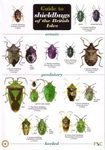About this book
Scale insects feed on plant juices and can easily be transported to new countries on live plants. They sometimes become invasive pests, costing billions of dollars in damage to crops worldwide annually. Farmers try to control them with toxic pesticides, risking environmental damage. Fortunately, scale insects are highly susceptible to control by natural enemies so biological control is possible. They have unique genetic systems, unusual metamorphosis, a broad spectrum of essential symbionts, and some are even sources of commercial products like red dyes, shellac and wax. There is therefore wide interest in these unusual, destructive, beneficial, and abundant insects.
The Encyclopedia of Scale Insect Pests is the most comprehensive, fully illustrated worldwide work on scale insect pests, providing detailed coverage of the most important species (230 species in 26 families, 36% of the species known). Advice is provided on collection, preservation, slide-mounting, vouchering, and labelling specimen, illustrated with colour photographs, diagrams and drawings.
Pest species are presented in two informal groups of families, the "primitive" Archaeococcids followed by the more "advanced" Neococcids, covered in phylogenetic order. Each family is illustrated and diagnosed based on features of live and slide-mounted specimens, with information on numbers of genera and species, main hosts, distribution, and biology.
For the important pest species, coverage includes information on the morphology of live and slide-mounted specimens, common names, principal synonyms, geographical distribution, plant hosts, plant damage and economic impact, reproductive biology, dispersal, and management strategies including biological, cultural and chemical control, sterile insect techniques, regulatory control, early warning systems and field monitoring. An additional complete list of scale insect pests worldwide is provided, comprising 642 species in 28 scale insect families (about 8% of the 8396 species of living scales known), with brief information on plant hosts, geographical distribution and validation sources. Beneficial uses of scale insects as sources of red dyes, natural resins and waxes, as agents for invasive weed control; and the importance of their honeydew to bees for making honey, and as a food source to other animals, are discussed. Encyclopedia of Scale Insect Pests finishes with a glossary and an index to scientific names.
Contents
Chapter 1. Beneficial scale insects
Chapter 2. A list of scale insect agricultural pests
Chapter 3. Archaeococcids
Chapter 4. Neococcoids
Chapter 5. Collection, preservation, slide-mounting, labelling and vouchering of scale insects
Customer Reviews
Biography
Takumasa Kondo is Senior Researcher, Corporación Colombiana de Investigación Agropecuaria (Agrosavia), Centro de Investigación Palmira, Colombia. BSc, MSc from Tokyo University of Agriculture, Japan; PhD Entomology, from Auburn University, Alabama, U.S.A. Studies IPM of insect and mite pests of tropical fruit crops, and the taxonomy of Coccomorpha. Editor-in-chief of the journal Ciencia y Tecnología Agropecuaria; and subject editor for several journals, including Neotropical Entomology, Revista Brasileira de Entomologia and Revista Colombiana de Entomología. Editorial Board Member for Fronteras de la Ciencia and Entomologia Experimentalis et Applicata. He has published more than 170 scientific papers, including books and book chapters.
Gillian Watson works on the taxonomy and identification of scale insects, especially agricultural pests, with an emphasis on invasive species worldwide. Currently working on a U.K. Darwin Initiative-funded project, “Agriculture and biodiversity: addressing scale insect threats in Kenya” as Project Manager and Researcher at the Department of Life Sciences, The Natural History Museum, London, U.K. Gillian is a Subject Editor for Hemiptera: Coccomorpha for the journal Zootaxa.





















![Faune de France, Volume 77: Hémiptères Saldidae et Leptopodidae d'Europe Occidentale et du Maghreb [Hemiptera Saldidae and Leptopodidae from Western Europe and the Maghreb]](http://mediacdn.nhbs.com/jackets/jackets_resizer_medium/34/34077.jpg?height=150&width=98)












